On December 04, the Practice Talk “How we see arts in AI era” took place at the Vietnamese Women’s Museum. Under the facilitation of moderator Nguyễn Hải Nam, artists Christian Berg, Cẩm-Anh Lương and Hà Châu Bảo Nhi revealed intriguing insights into their creative process while also discussing the role of artificial intelligence (AI) in today’s art world with the audience.
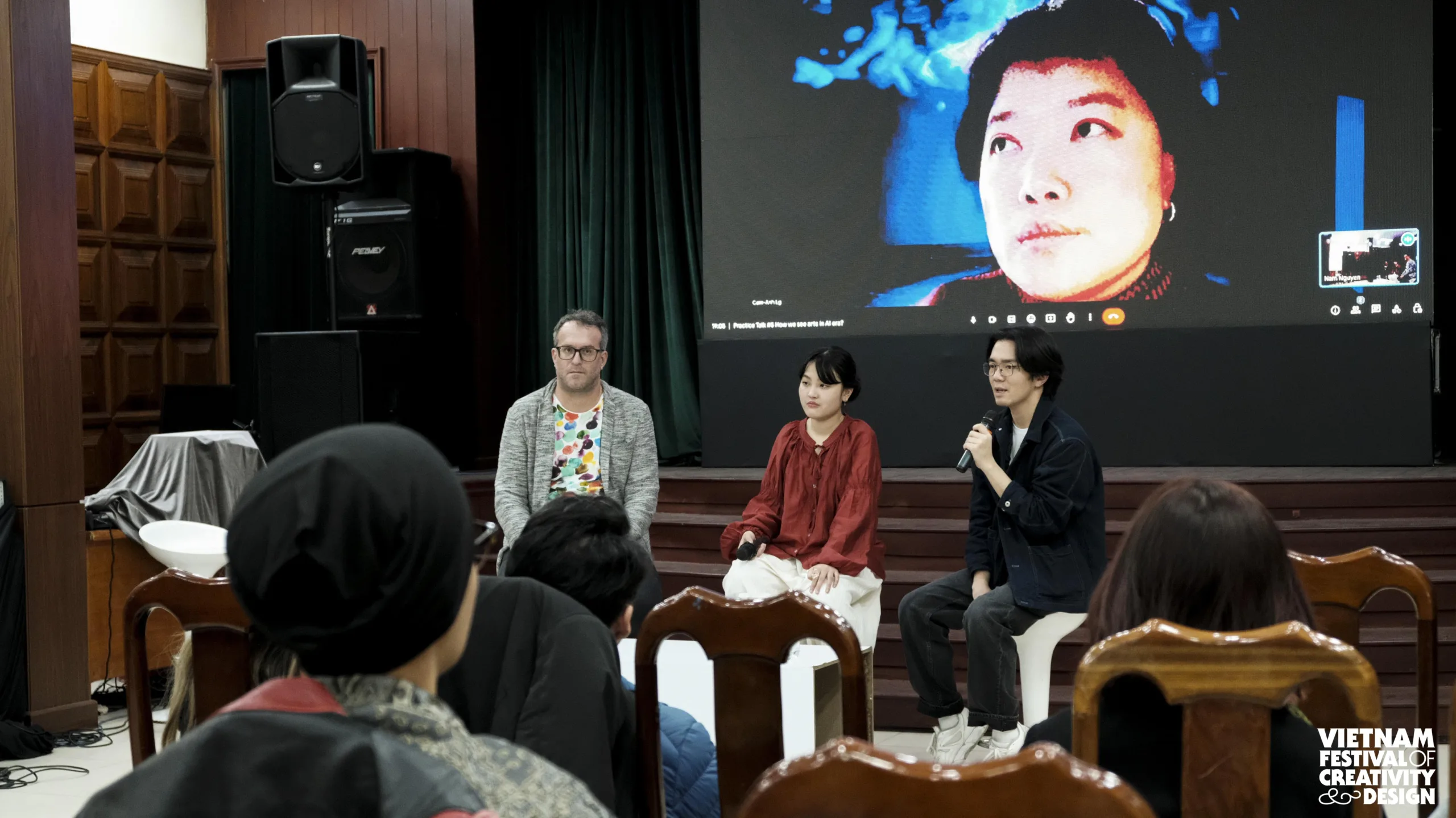
From left to right: Christian Berg, Hà Châu Bảo Nhi, Nguyễn Hải Nam and Cẩm-Anh Lương join through online meeting
Art experiments with AI
Christian Berg first moved to Southeast Asia in his 20s to practice documentary and commercial photography. Since then, Southeast Asia and particularly HCMC city has become his “home”, where he feels belonged. From scattered pieces of memories collected throughout his time here, he created “All the Places I Have Lived” which documented the complexity of places and explored the concept of “home” through the eyes of a Westerner relocated to Asia.
“All the Places I Have Lived” is an extended photography experiment. In the first phase, Christian Berg used AI to mix different images into one single composition. Then, he continued with ChatGPT and Python to “distort” these images with layers of glitches and texts.
“The places in these images are not real, they represent a hazy and chaotic flow of memory. The input data is always influenced by my personal biases, and as a result, the output reveals interesting things that I myself have never thought of,” Christian Berg said about his work.
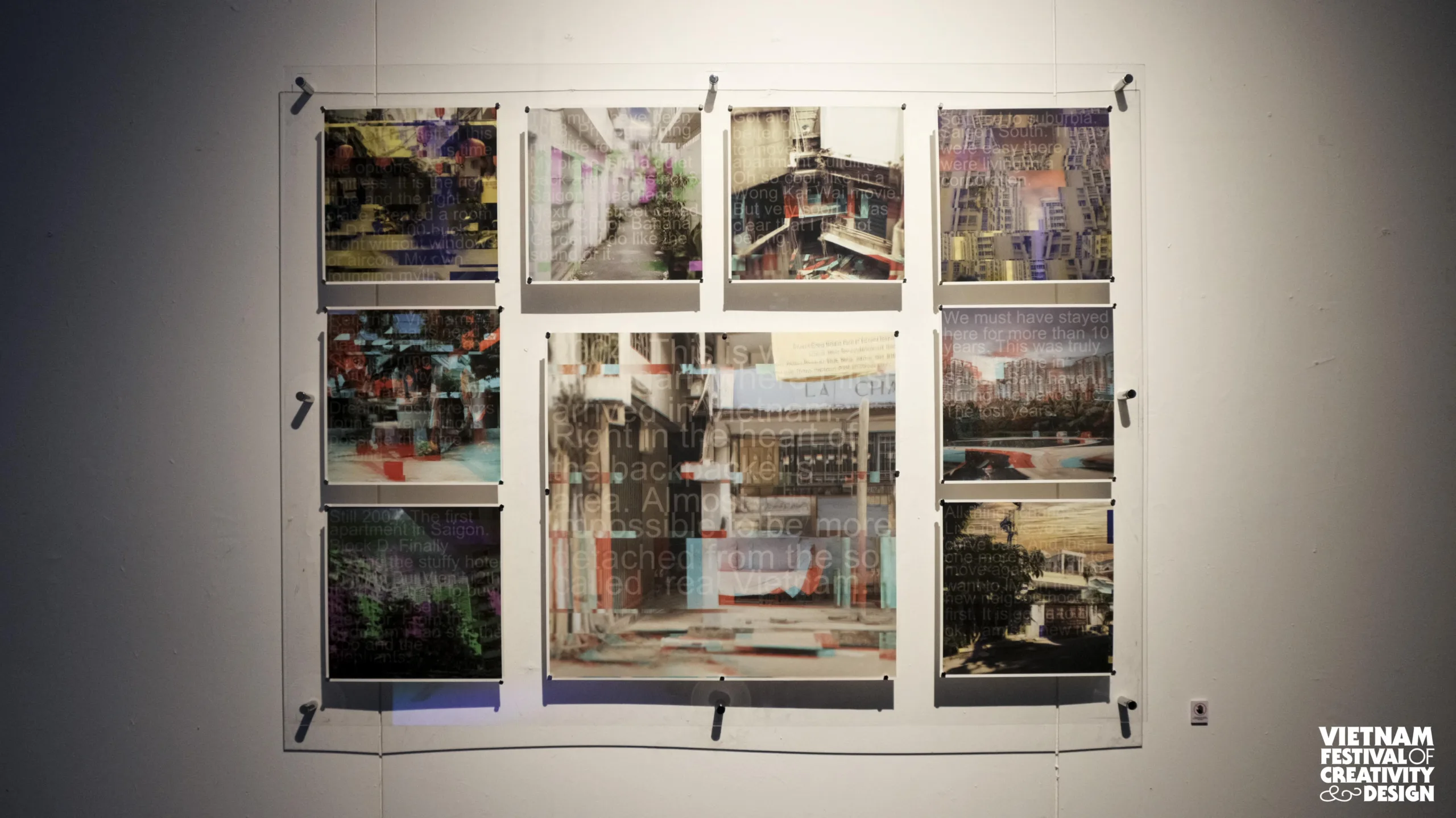
“All the Places I Have Lived” by Christian Berg
Cẩm-Anh Lương, a Vietnamese new media artist and designer based in Germany, also had her work on display at this exhibition. “TrustIn_AI” is her first artwork involving AI. Through this piece, she wanted to explore the relationship between AI and human trust, opening up a conversation on how these two distinctive entities can interact.
Using a compilation of data on beliefs and festivals, Cẩm-Anh created ever-changing moving images with AI. The artwork can detect human bodies and display corresponding interactive projections that match their movements.
Cẩm-Anh said: “Will the audience find the generated images fascinating? Will they have doubts about the artwork? Will the artwork inspire them to continue creating other artworks with AI? I’m very curious about VFCD audience’s reaction to TrustIn_AI.”
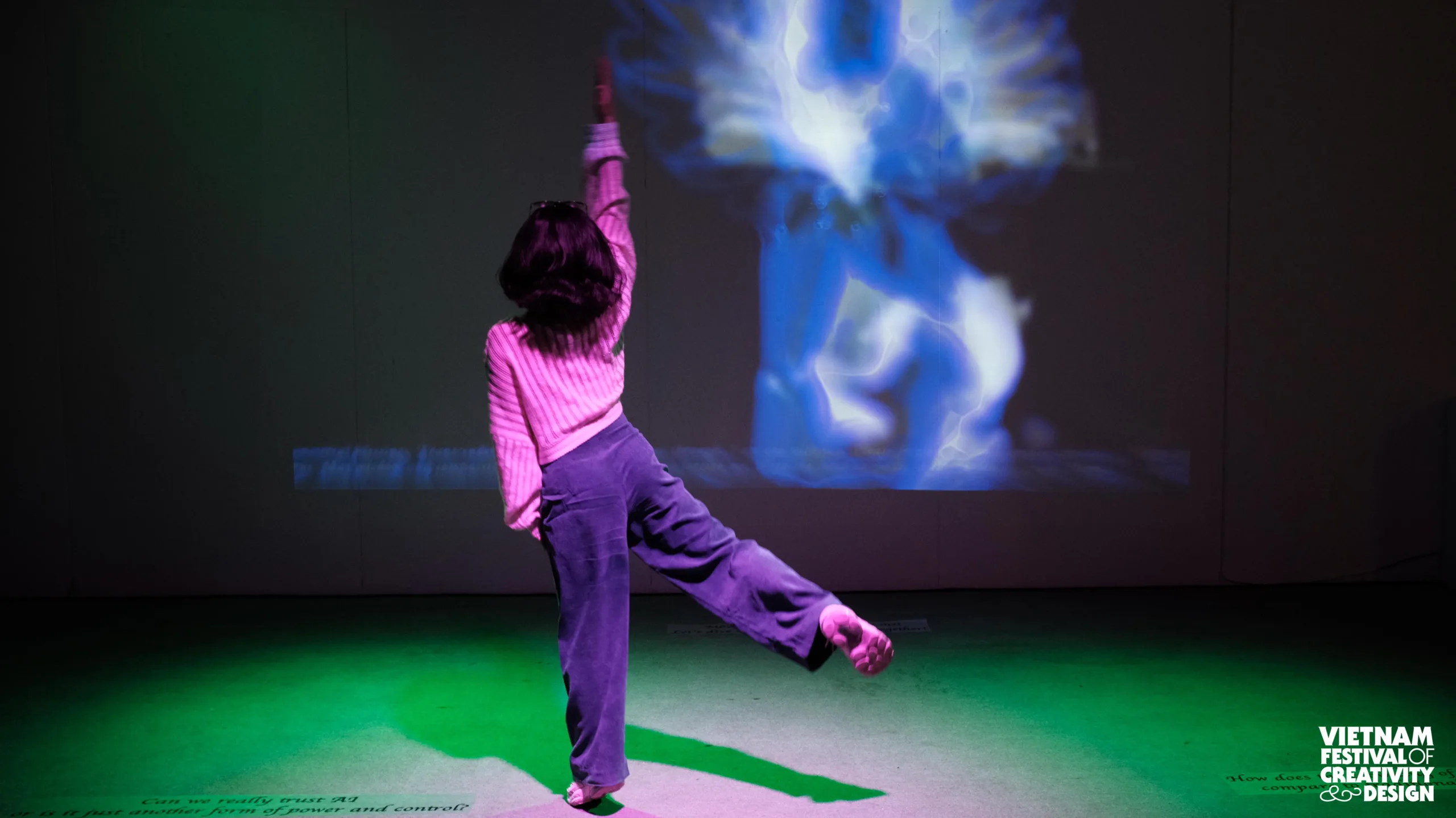
“TrustIn_AI” by Cẩm-Anh Lương
Formerly an IT consultant, Hà Châu Bảo Nhi offered a unique experiment with her work “Between Two Worlds”. The artwork is her response to the concerns about personal identities amid different worlds.
“In the physical world, humans will become spirits after death and remembered through tangible photographs. But in today’s era, when our data exists forever in the database of a certain digital platform, we become digital ghosts,” Nhi said about the message behind her work.
To illustrate this idea, Nhi used machine learning algorithms to create delays in the reflections of the audience on the screen of the artwork. She also recorded the viewers with a webcam instead of a Kinect sensor. Nhi explained, “Kinect uses a visual technology different to the normal human eyes. I want to convey the idea that ghosts are also once humans, and they see the world the same way we do.”
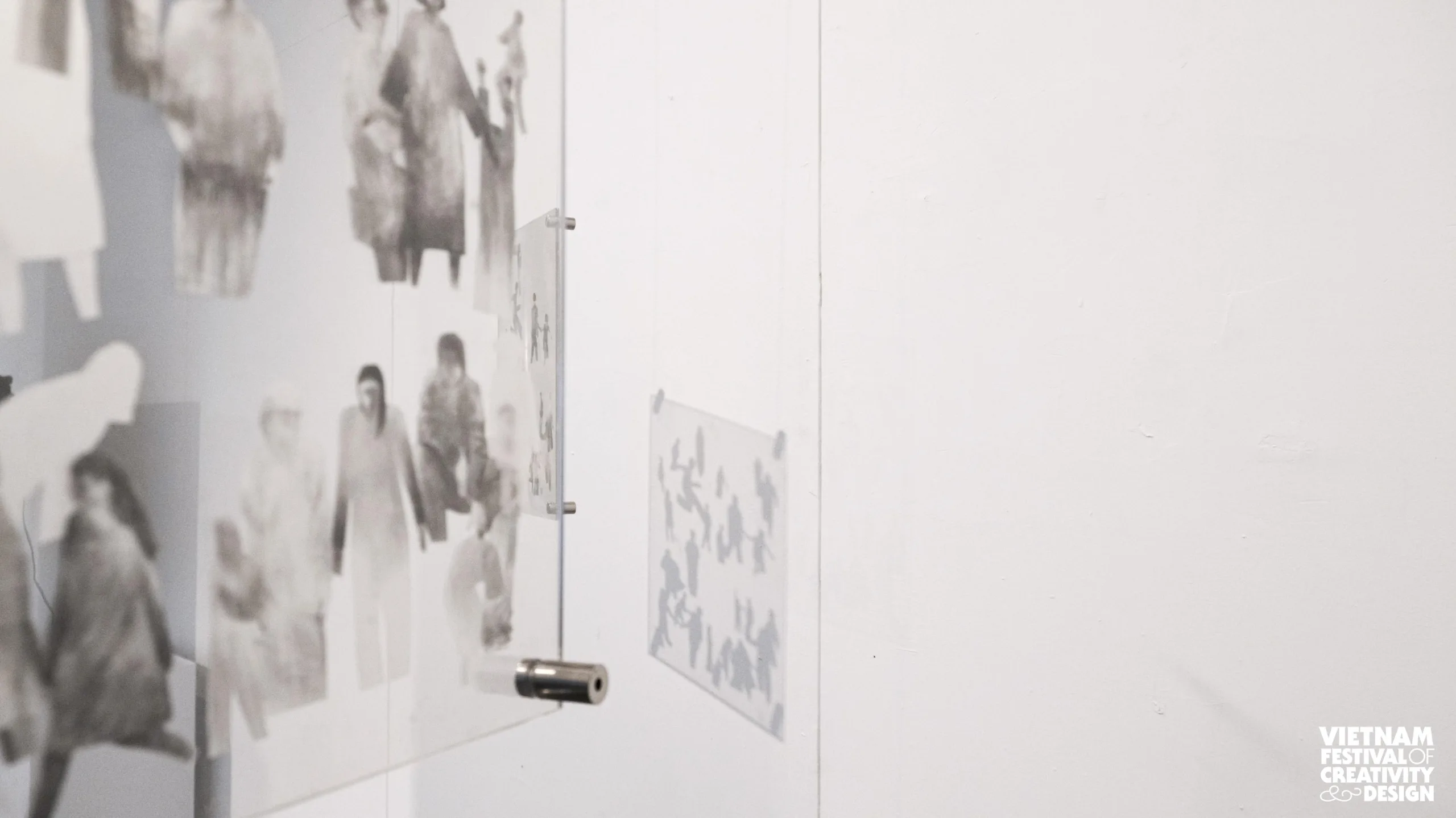
A segment of “Between Two Worlds” by Hà Châu Bảo Nhi
Idea is the core of art
The discussion became more robust with conversations on the impacts of AI on the art scene. Facing the audience’s concerns of losing one’s identity in the age of technology, the artists unanimously agreed that AI cannot completely replace humans.
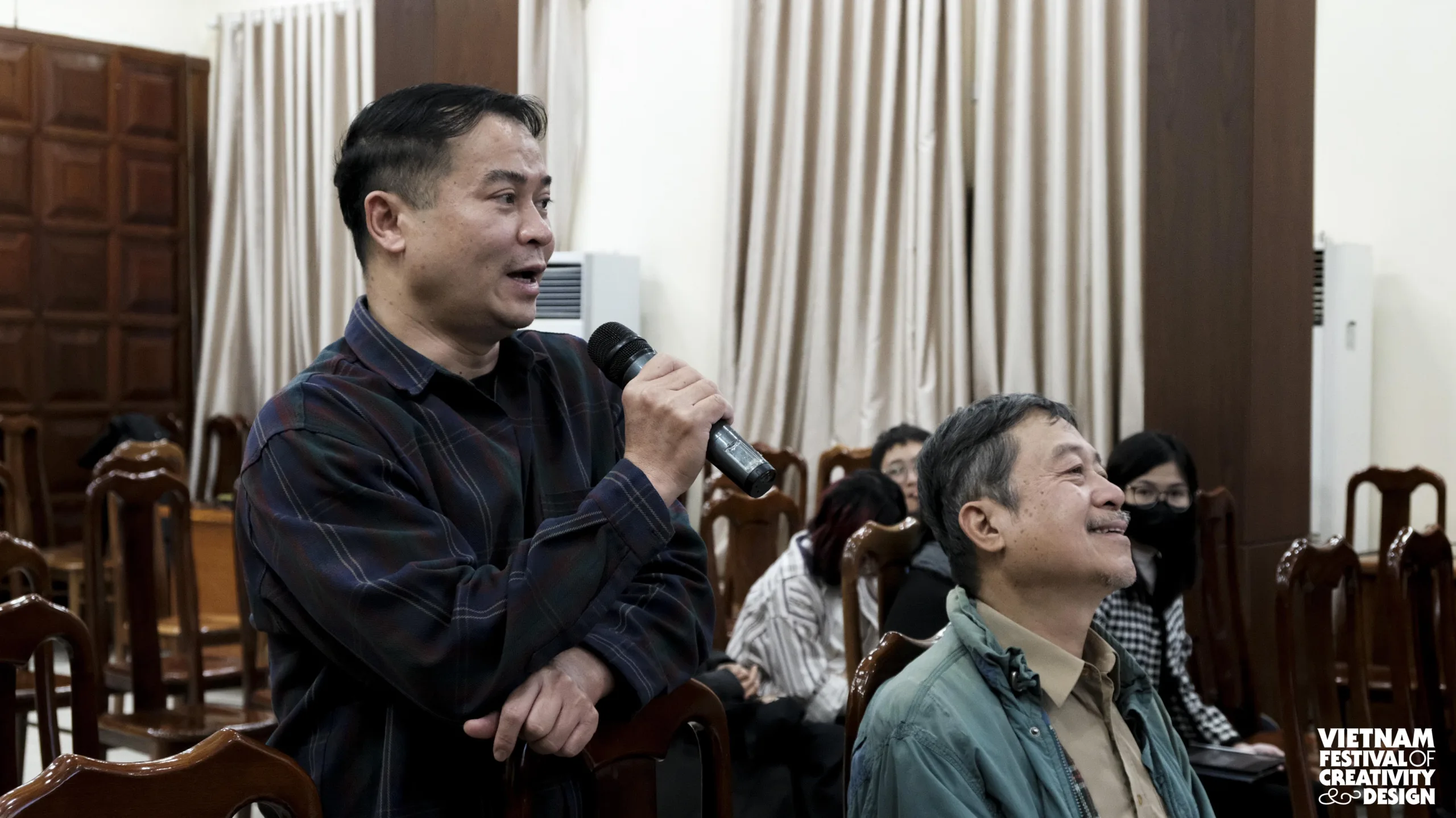
An audience member posed a question to the artists
For Hà Châu Bảo Nhi, AI is similar to a black box, we don’t know what is inside and therefore may overreact sometimes. But AI is fundamentally algorithms, devoid of consciousness and operates based on inputs provided by humans. “AI becoming a belief only happens when we never try to understand what it is,” said Hà Châu Bảo Nhi.
Nhi believes in the originality of artists’ ideas. Artists create artworks to express their ideas, and AI is just one among many tools they can use for illustration.
In the end, the purpose of art is to seek the answer to the artist’s big question. “One can evaluate the originality of an artwork without relying on AI. Artists have their own practices, they have different forms of art to seek out the answer. They always anticipate something greater than AI-generated images,” said Cẩm-Anh Lương.
AI can imitate data available on the Internet, but can not replace how we live and the moments we share. “AI has no consciousness, it is not that powerful. But as an artist, you can experiment with AI to explore what you can possibly achieve with it,” concluded Christian Berg./